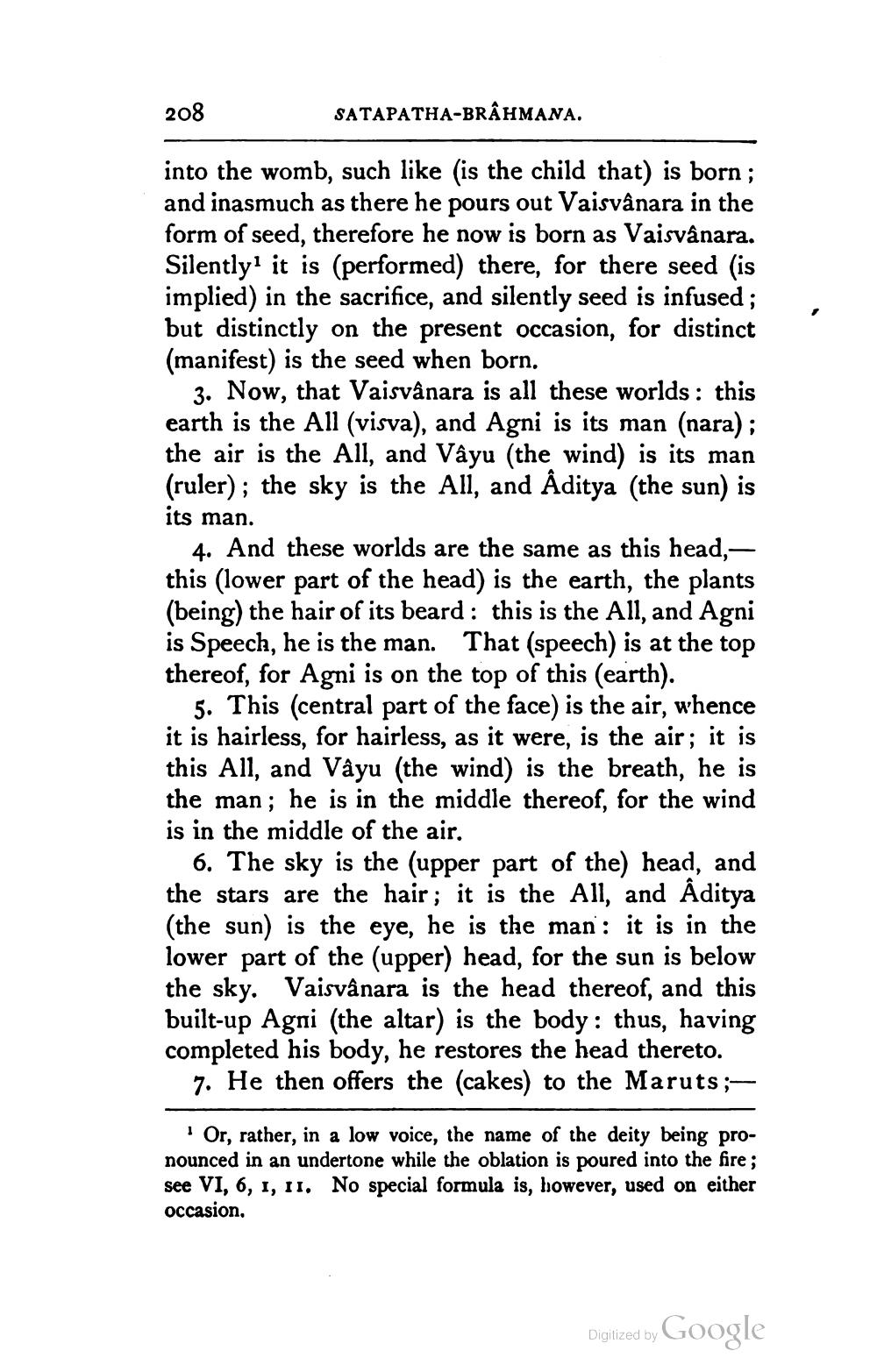________________
208
SATAPATHA-BRAHMANA.
into the womb, such like (is the child that) is born; and inasmuch as there he pours out Vaisvânara in the form of seed, therefore he now is born as Vaisvânara. Silently, it is (performed) there, for there seed (is implied) in the sacrifice, and silently seed is infused; but distinctly on the present occasion, for distinct (manifest) is the seed when born.
3. Now, that Vaisvânara is all these worlds : this earth is the All (visva), and Agni is its man (nara); the air is the All, and Vayu (the wind) is its man (ruler); the sky is the All, and Aditya (the sun) is its man.
4. And these worlds are the same as this head, - this (lower part of the head) is the earth, the plants (being) the hair of its beard : this is the All, and Agni is Speech, he is the man. That (speech) is at the top thereof, for Agni is on the top of this (earth).
5. This (central part of the face) is the air, whence it is hairless, for hairless, as it were, is the air; it is this All, and Vâyu (the wind) is the breath, he is the man; he is in the middle thereof, for the wind is in the middle of the air.
6. The sky is the (upper part of the) head, and the stars are the hair ; it is the All, and Aditya (the sun) is the eye, he is the man : it is in the lower part of the (upper) head, for the sun is below the sky. Vaisvânara is the head thereof, and this built-up Agni (the altar) is the body : thus, having completed his body, he restores the head thereto.
7. He then offers the (cakes) to the Maruts;
Or, rather, in a low voice, the name of the deity being pronounced in an undertone while the oblation is poured into the fire; see VI, 6, 1, 11, No special formula is, however, used on either occasion,
Digitized by Google




